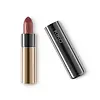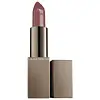KIKO Milano Gossamer Emotion Creamy Lipstick Versus Laura Mercier Rouge Essentiel Silky Cream Lipstick
What's inside
What's inside
 Key Ingredients
Key Ingredients

 Benefits
Benefits

 Concerns
Concerns

 Ingredients Side-by-side
Ingredients Side-by-side

Di-C12-13 Alkyl Tartrate
EmollientOctyldodecanol
EmollientMyristyl Trisiloxane
EmollientCetyl Dimethicone
EmollientPolyethylene
AbrasiveCaprylic/Capric Triglyceride
MaskingCera Microcristallina
Emulsion StabilisingC30-45 Alkyl Dimethicone
Skin ConditioningMica
Cosmetic ColorantTalc
AbrasiveStearalkonium Bentonite
Gel FormingDicalcium Phosphate
AbrasivePropylene Carbonate
SolventSynthetic Fluorphlogopite
Ethyl Vanillin
MaskingCaprylyl Methicone
Skin ConditioningZea Mays Oil
EmulsifyingEthylhexyl Palmitate
EmollientPhalaenopsis Amabilis Extract
HumectantPentaerythrityl Tetra-Di-T-Butyl Hydroxyhydrocinnamate
AntioxidantTrihydroxystearin
Skin ConditioningCentella Asiatica Extract
CleansingSodium Hyaluronate
HumectantGlucomannan
Skin ConditioningTocopheryl Acetate
AntioxidantBHT
AntioxidantTin Oxide
AbrasiveCI 77891
Cosmetic ColorantCI 77491
Cosmetic ColorantCI 77947
CI 75470
Cosmetic ColorantCI 15850
Cosmetic ColorantCI 42090
Cosmetic ColorantCI 45380
Cosmetic ColorantCI 45410
Cosmetic ColorantDi-C12-13 Alkyl Tartrate, Octyldodecanol, Myristyl Trisiloxane, Cetyl Dimethicone, Polyethylene, Caprylic/Capric Triglyceride, Cera Microcristallina, C30-45 Alkyl Dimethicone, Mica, Talc, Stearalkonium Bentonite, Dicalcium Phosphate, Propylene Carbonate, Synthetic Fluorphlogopite, Ethyl Vanillin, Caprylyl Methicone, Zea Mays Oil, Ethylhexyl Palmitate, Phalaenopsis Amabilis Extract, Pentaerythrityl Tetra-Di-T-Butyl Hydroxyhydrocinnamate, Trihydroxystearin, Centella Asiatica Extract, Sodium Hyaluronate, Glucomannan, Tocopheryl Acetate, BHT, Tin Oxide, CI 77891, CI 77491, CI 77947, CI 75470, CI 15850, CI 42090, CI 45380, CI 45410
Cetyl Dimethicone
EmollientDi-C12-13 Alkyl Tartrate
EmollientOctyldodecanol
EmollientC30-45 Alkyl Dimethicone
Skin ConditioningPolyethylene
AbrasiveCaprylic/Capric Triglyceride
MaskingMicrocrystalline Wax
Emulsion StabilisingDicalcium Phosphate
AbrasiveStearalkonium Bentonite
Gel FormingMica
Cosmetic ColorantTocopheryl Acetate
AntioxidantCamellia Oleifera Seed Oil
Skin ConditioningSimmondsia Chinensis Seed Oil
EmollientPadina Pavonica Thallus Extract
Skin ConditioningPentaerythrityl Tetra-Di-T-Butyl Hydroxyhydrocinnamate
AntioxidantPropylene Carbonate
SolventTalc
AbrasiveCaprylyl Methicone
Skin ConditioningSynthetic Fluorphlogopite
Tin Oxide
AbrasiveTitanium Dioxide
Cosmetic ColorantCI 42090
Cosmetic ColorantCI 77491
Cosmetic ColorantCI 77492
Cosmetic ColorantCI 15850
Cosmetic ColorantCI 45410
Cosmetic ColorantZinc Oxide
Cosmetic ColorantCetyl Dimethicone, Di-C12-13 Alkyl Tartrate, Octyldodecanol, C30-45 Alkyl Dimethicone, Polyethylene, Caprylic/Capric Triglyceride, Microcrystalline Wax, Dicalcium Phosphate, Stearalkonium Bentonite, Mica, Tocopheryl Acetate, Camellia Oleifera Seed Oil, Simmondsia Chinensis Seed Oil, Padina Pavonica Thallus Extract, Pentaerythrityl Tetra-Di-T-Butyl Hydroxyhydrocinnamate, Propylene Carbonate, Talc, Caprylyl Methicone, Synthetic Fluorphlogopite, Tin Oxide, Titanium Dioxide, CI 42090, CI 77491, CI 77492, CI 15850, CI 45410, Zinc Oxide
Ingredients Explained
These ingredients are found in both products.
Ingredients higher up in an ingredient list are typically present in a larger amount.
C30-45 Alkyl Dimethicone is a type of silicone.
This ingredient is an emollient, solvent, and texture enhancer. It is considered a skin-softener by helping the skin prevent moisture loss.
It helps thicken a product's formula and makes it easier to spread by dissolving clumping compounds.
Caprylic Triglyceride is made by combining glycerin with coconut oil, forming a clear liquid.
While there is an assumption Caprylic Triglyceride can clog pores due to it being derived from coconut oil, there is no research supporting this.
Learn more about Caprylic/Capric TriglycerideCaprylyl Methicone is a type of silicone.
It helps soften and soothe the skin by creating a thin film on top. This film helps trap moisture, keeping your skin hydrated.
Cetyl Dimethicone is a type of silicone.
Ci 15850 is the pigment color red. It is an azo dye and created synthetically.
Azo dyes need to be thoroughly purified before use. This allows them to be more stable and longer-lasting.
This ingredient is common in foundations, lipsticks, and blushes. This color is described as brown/orangey red.
It has many secondary names such as Red 6 and Red 7. According to a manufacturer, Red 6 usually contains aluminum.
Learn more about CI 15850Ci 42090 is a synthetic dye created from petroleum. It is used to give a bright blue color to cosmetics, medicine, and food.
CI 45410 is a synthetic red-pigment and dye.
It often goes by both Red 28 or Red 27; manufacturers label both ingredients as CI 45410.
This dye is commonly found in makeup because it imparts a vivid color. Some types of this dye change color based on pH level and interaction with moisture:
Your skin has a natural pH of around 4.5 - 5.5.
According to the FDA, CI 45410 is not permitted for use in eye products.
Red 27 is a flourescein dye and commonly used as a fluorescent tracer in medicine.
Learn more about CI 45410Ci 77491 is also hydrated iron III oxide. It's sole purpose is to give a red/pink hue to products.
Iron III oxides are classified as inorganic chemicals for coloring.
Synthetically created Ci 77491 is considered safer than those naturally found. This is because the synthetically created version may contain less impurities. Iron oxides are generally non-toxic and non-allergenic.
Learn more about CI 77491We don't have a description for Di-C12-13 Alkyl Tartrate yet.
Dicalcium Phosphate is an exfoliant.
Mica is a naturally occurring mineral used to add shimmer and color in cosmetics. It can also help improve the texture of a product or give it an opaque, white/silver color.
Serecite is the name for very fine but ragged grains of mica.
This ingredient is often coated with metal oxides like titanium dioxide. Trace amounts of heavy metals may be found in mica, but these metals are not harmful in our personal products.
Mica has been used since prehistoric times throughout the world. Ancient Egyptian, Indian, Greek, Roman, Aztec, and Chinese civilizations have used mica.
Learn more about MicaOctyldodecanol is a fatty alcohol. It is primarily used to enhance the texture of products.
As an emulsifier, Octyldodecanol helps prevent the oils and waters from separating. It also prevents ingredients from creating foam when shaken.
Octyldodecanol is created by reducing fatty acid to an alcohol.
Due to its high molecular weight, it does not get absorbed into the skin.
Learn more about OctyldodecanolPentaerythrityl Tetra-Di-T-Butyl Hydroxyhydrocinnamate (long name, huh?) is a synthetic antioxidant.
It is used to help stabilize other antioxidants or prevent the color from changing in a product.
As an antioxidant, it helps fight free-radical molecules. Free-radical molecules are capable of damaging our cells and other genetic material. Thus, antioxidants may reduce the signs of aging.
This ingredient is oil-soluble.
Learn more about Pentaerythrityl Tetra-Di-T-Butyl HydroxyhydrocinnamatePolyethylene is a synthetic ingredient that helps the skin retain moisture. It is a polymer.
It is also typically used within product formulations to help bind solid ingredients together and thicken oil-based ingredients. When added to balms and emulsions, it helps increase the melting point temperature.
This ingredient is a solvent. It helps dissolve active ingredients and alter the texture of products.
Propylene Carbonate is commonly used in makeup and with clay, such as montmorillonite or bentonite.
Studies show this ingredient to be safe for cosmetics. When it is undiluted, it can cause skin irritation. (It is always diluted in skincare and makeup). This ingredient is water-soluble.
Propylene Carbonate is created from propylene glycol and carbonic acid.
Learn more about Propylene CarbonateWe don't have a description for Stearalkonium Bentonite yet.
Synthetic Fluorphlogopite is the synthethic version of mica. It consists of fluorine, aluminum and silicate.
Synthetic Fluorphlogopite is used to add volume to products.
It is considered non-irritating on the skin.
Learn more about Synthetic FluorphlogopiteTalc is a clay mineral. It helps absorb moisture and improve the texture of products. Like other types of clay, Talc can have a slight exfoliating effect on skin. Talc can be added to increase the volume of products.
Some Baby powders are made by combining talc with corn starch. The word "talc" comes from Latin and originates from Arabic. Talc is a mineral commonly found throughout the world.
If you have any concerns about using talc, we recommend checking out the FDA's official page.
Learn more about TalcTin Oxide is an inorganic oxide used to add opacity and volume to a product. In nature, it is already found in mineral form. The main ore of tin is an opaque and shiny mineral called casseterite.
Tin Oxide helps remove translucency in a product, or make it more opaque. Besides adding opacity, tin oxide is used for bulking to add volume.
Tocopheryl Acetate is AKA Vitamin E. It is an antioxidant and protects your skin from free radicals. Free radicals damage the skin by breaking down collagen.
One study found using Tocopheryl Acetate with Vitamin C decreased the number of sunburned cells.
Tocopheryl Acetate is commonly found in both skincare and dietary supplements.
Learn more about Tocopheryl Acetate